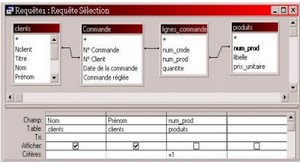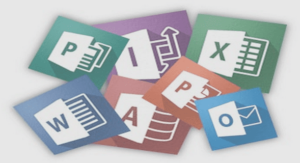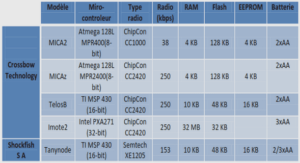– Introduction –
– Creating A Database –
– Tables Design –
– Introduction To Microsoft Access Objects –
– Controlling The User’s Input –
– Relationships – Subdatasheets –
– Forms Design Overview –
– Exploring And Analyzing Data –
– Query Design And Exploration –
– Forms Properties –
– Calculated Fields –
– Advanced Queries –
– Exploring Forms Controls –
– Designing And Improving A Report –
– Importing From And Exporting Data To Other Applications –
– Macros –
– Switchboard –
– Introduction to VBA –
– Shortcuts – A Complete Database Created With The Keyboard –
1 – Introduction :
A database is a collection of information organized as to make it easy to view it, search it, retrieve the right detail, and collect the necessary facts in an easier, timely, and effortless manner as possible.
– Relational Database:
An organized database is composed of inter-related parts. Since you define these parts, you also organize them in a manner that helps some parts of your database to supply specific information to others. In one part, you would cover one category of data, such as people’s personal information (name, date of birth, salary, hobbies, etc), in another you would cover what they buy in a store.
– Microsoft Access:
Microsoft Access is a relational database used on desktop computers to manage information on different levels for different purposes.
Microsoft Access can be used for personal information management, in a small business to organize and manage all data, or in an enterprise to communicate with servers.
– Database Management System (DBMS):
A database is an organized collection of data. Organization means method, it assumes discipline, it also anticipates efficient manner in using that information. Unless you are creating small applications for your personal use (and I don’t think you are exclusively doing just that), you will usually need to share your data either with other people (users, DB developers, etc) or other machines. To make your job easier, Microsoft Access provides in one package the database information and the tools you need to use your database. To be organized, you will divide your database in different related parts. The method of management you will use makes Microsoft Access a Database Management System.
– Components of a Microsoft Access database:
When you open an instance of Microsoft Access, you encounter the database window, which is thecontrol point of the different parts of your application.
From here, you can click an icon to access a specific category, referred to as objects.
Microsoft Access keeps different details about your database in different formats. If you click the Tables button under the Objects button, you get to the Tables category.
Tables:
This is the central point of your development, because all data is stored in tables. The functioning of your database relies on how you design your tables. For better organization, you will have various tables in your database, each for a different purpose. For example, for a video club application, you would use one table to store employees information, another table to store customers records, yet another table to list different video tapes (their titles, ratings, actors names),
Creating A Database
1 – Introduction
Creating a database is, of course, your first concern. The usual problem lies on how and where to start. The primary decision you will make, and that you will be changing, is the purpose of your database. What do you expect from the database? Actually, that’s the first mistake. The question is, what do your users expect from this database? If an auto part dealer hires you to design and create her database, you would spend some time finding out how she wants the software to behave, what kinds of business partners and customers she has, what information she will be entering in it, will this same piece of software be used for other purposes besides running her business (pay roll, appointments, etc)?
2 – Creating a Database from a Template:
Microsoft Access ships with a few sample databases that you can use or learn from (don’t hold this against me but this is an area where MS Access 97 is better than MS Access 2000). To experiment with one, we will create a database using one of the templates.
Start Microsoft Access. If you just started the application, you will see the starting Microsoft Access dialog. Click the second radio button; in MS Access 97, it is the Database Wizard radio button; in MS Access 2000 it is the Access database wizards, pages, and
reports radio button.
Microsoft Access database (1,10 Mo) (Cours PDF)


